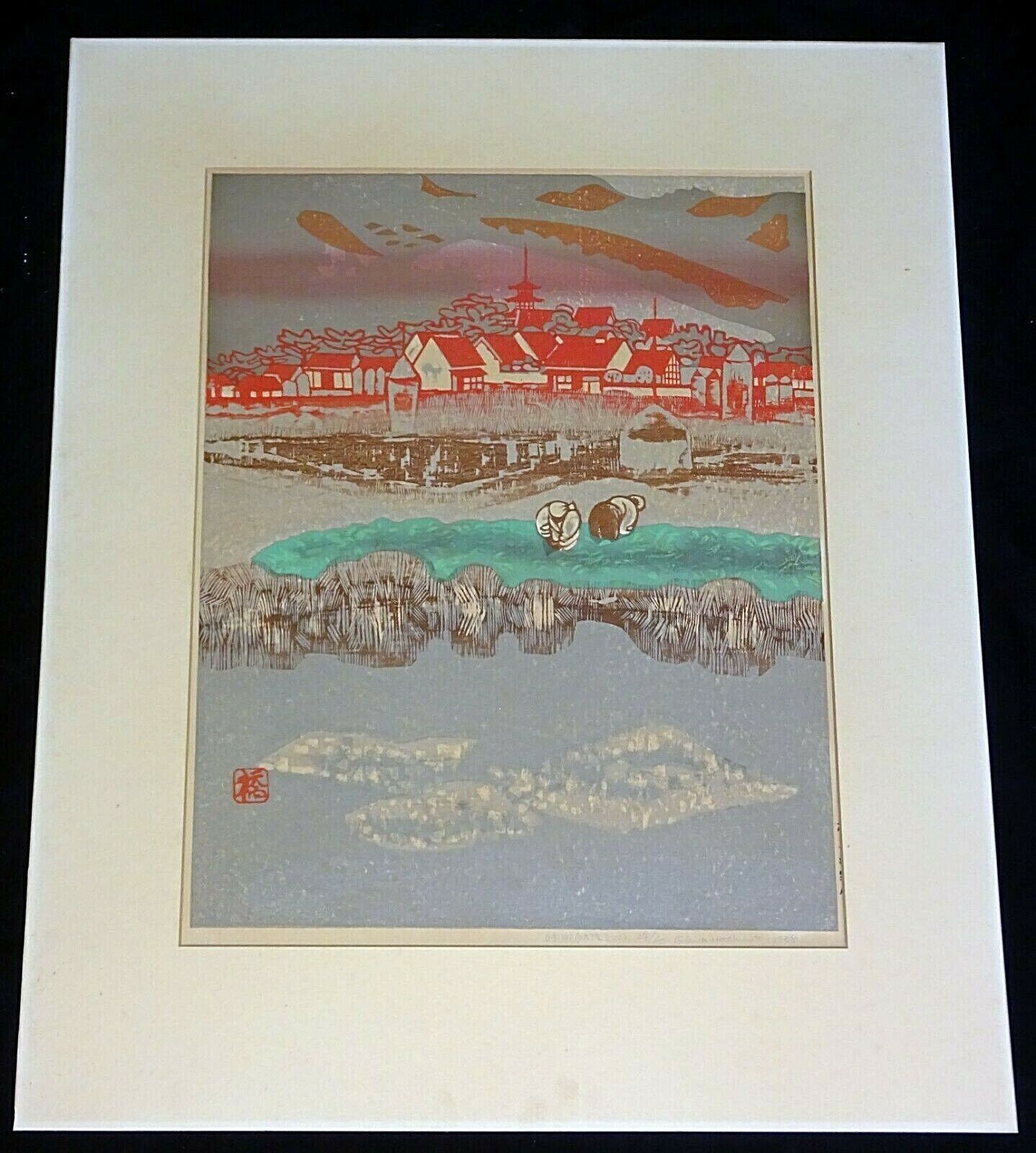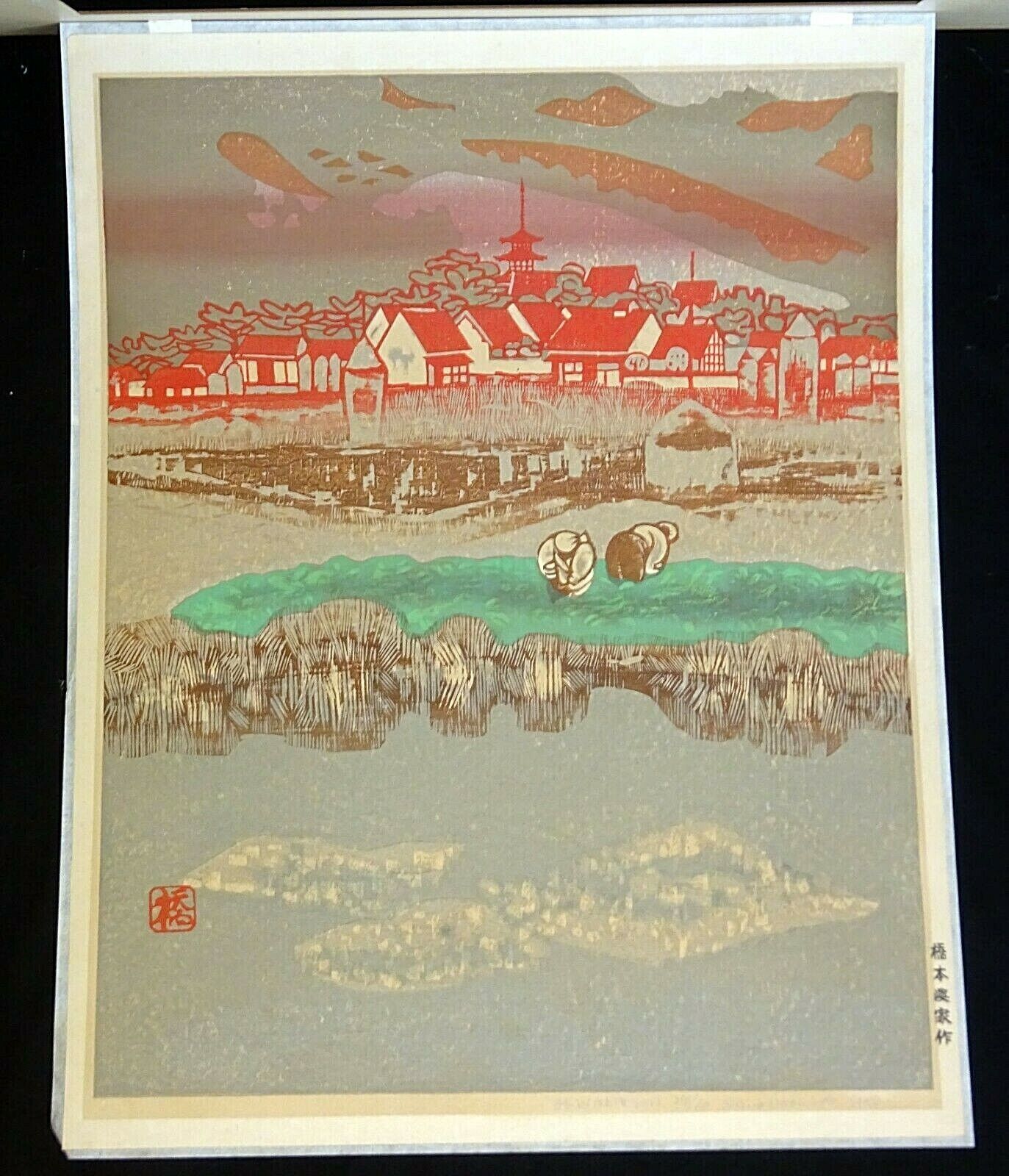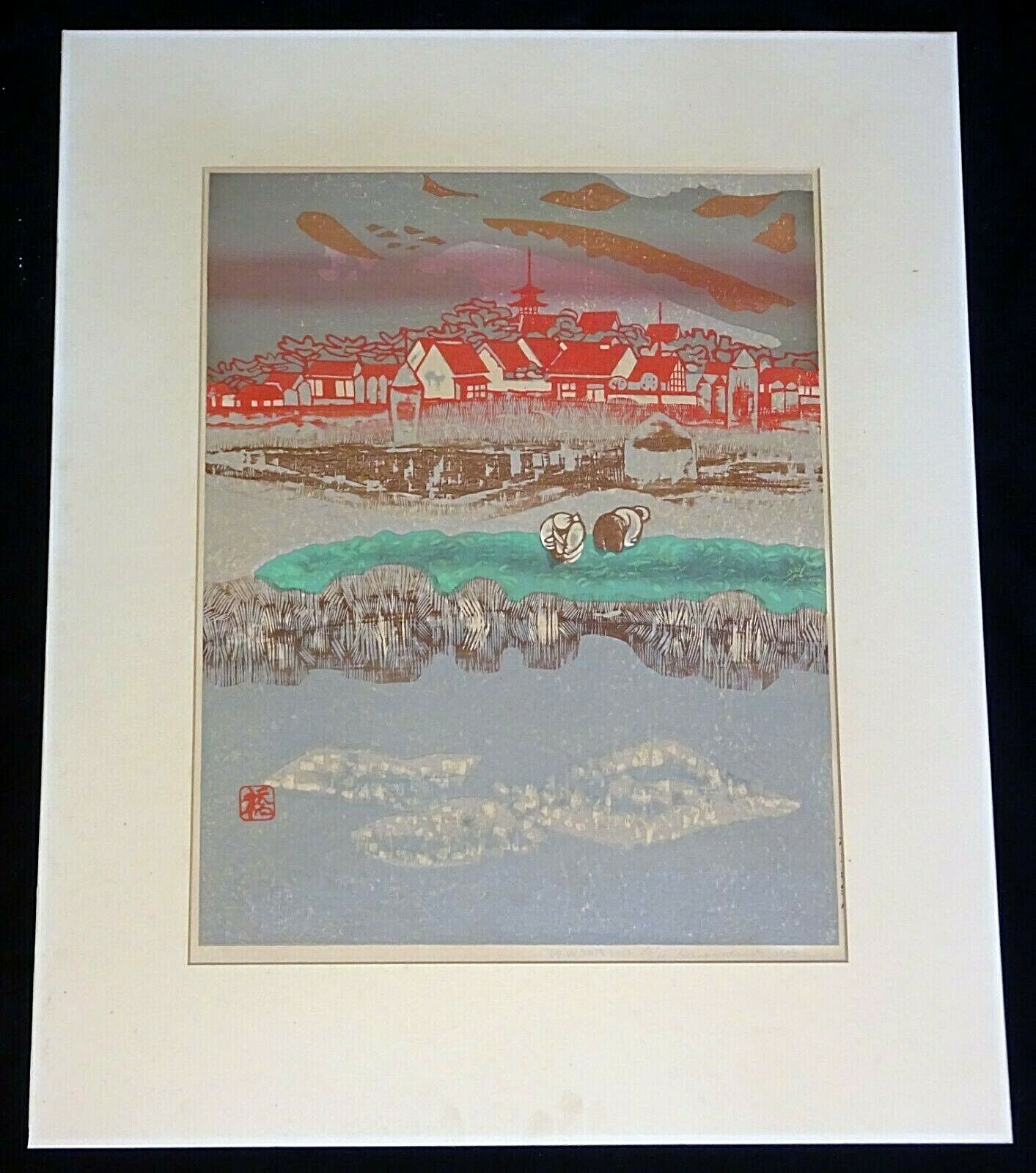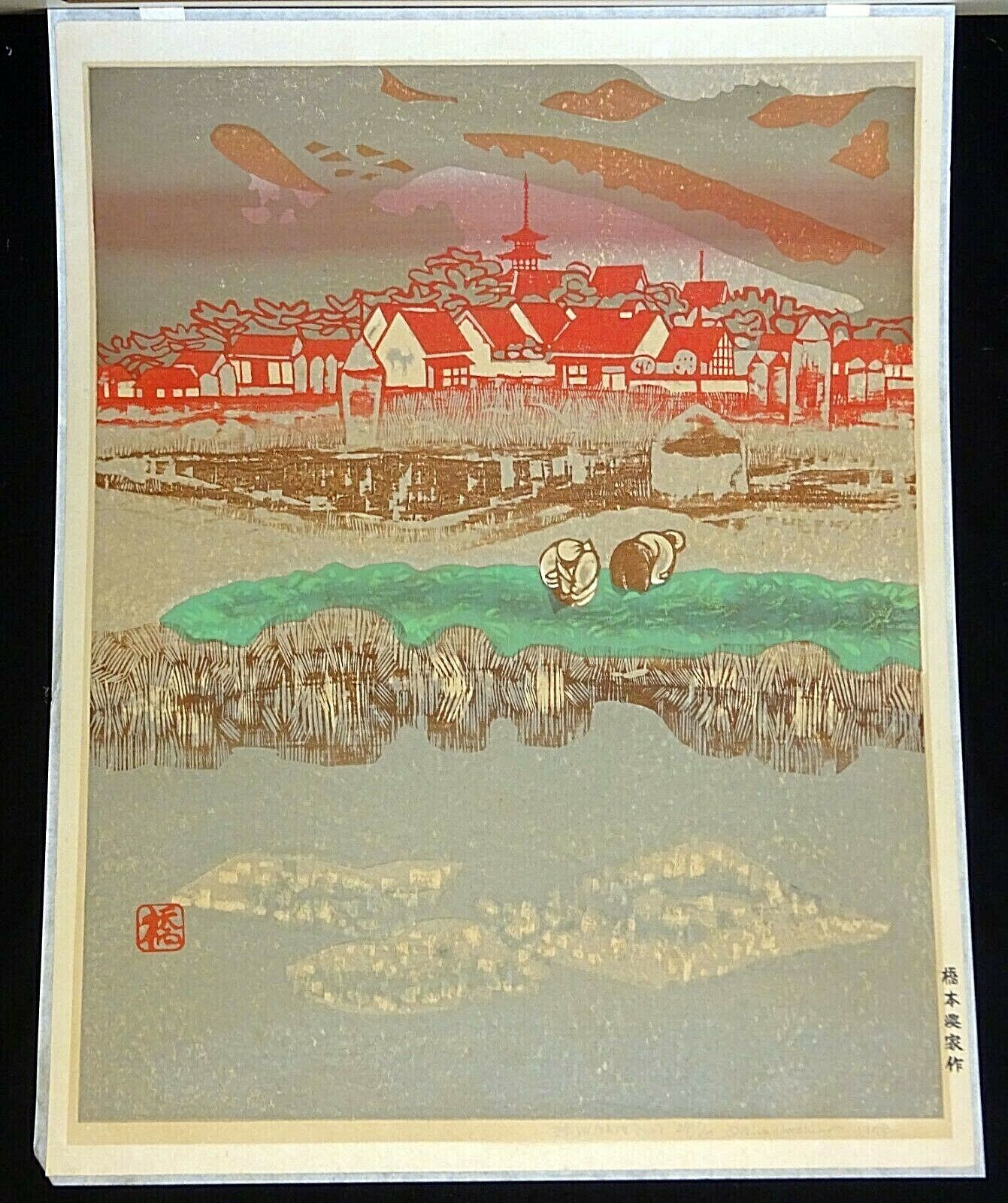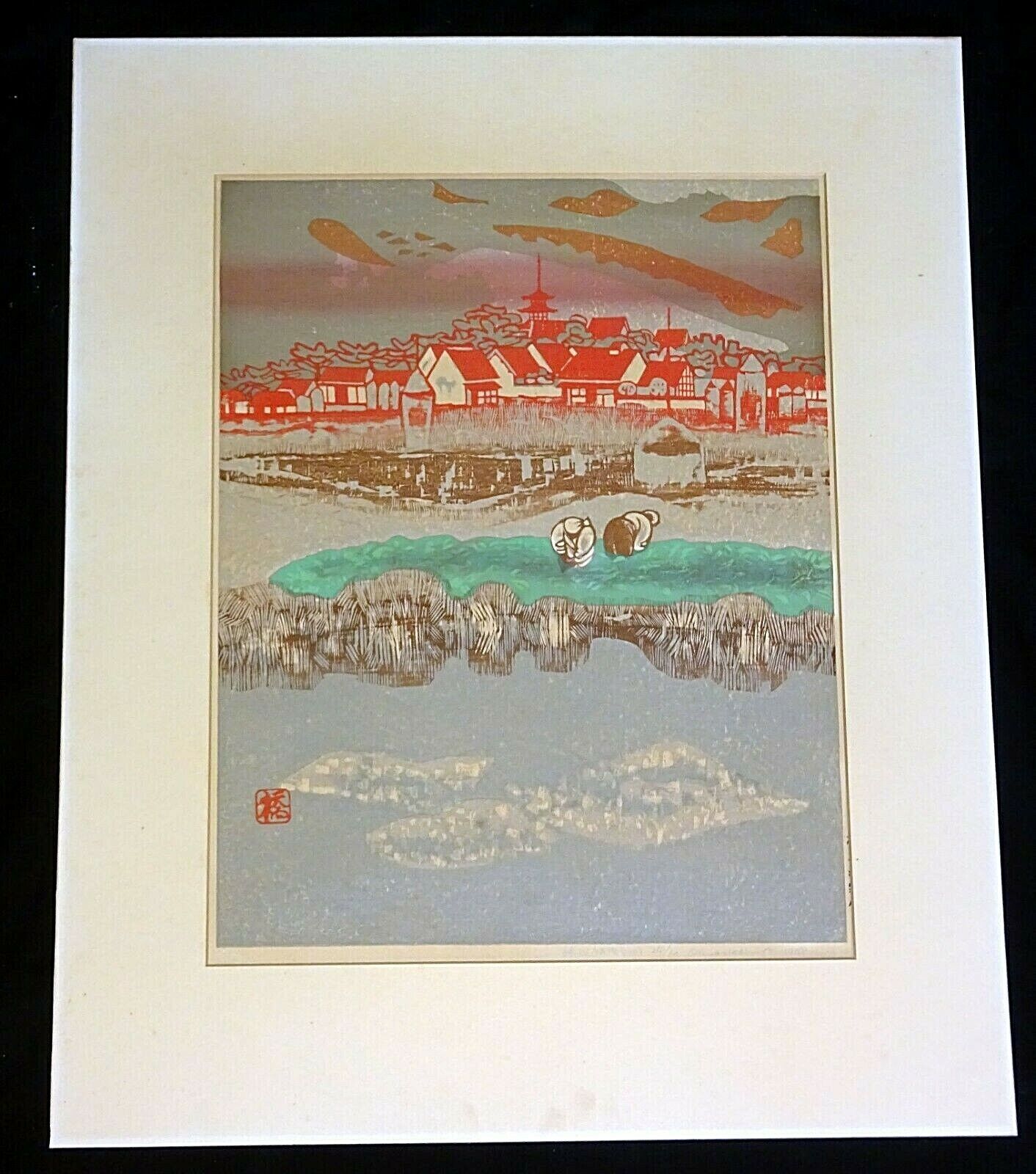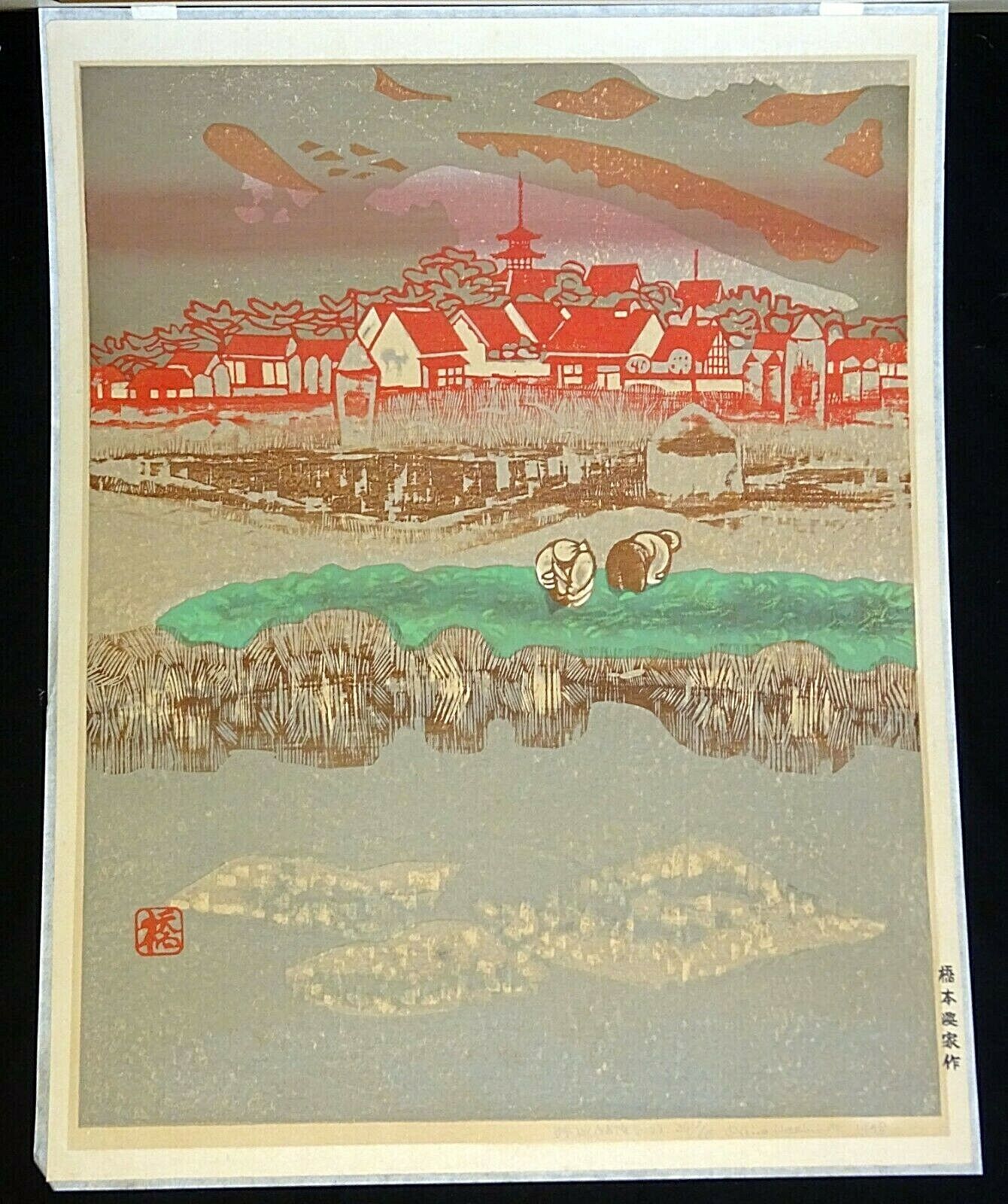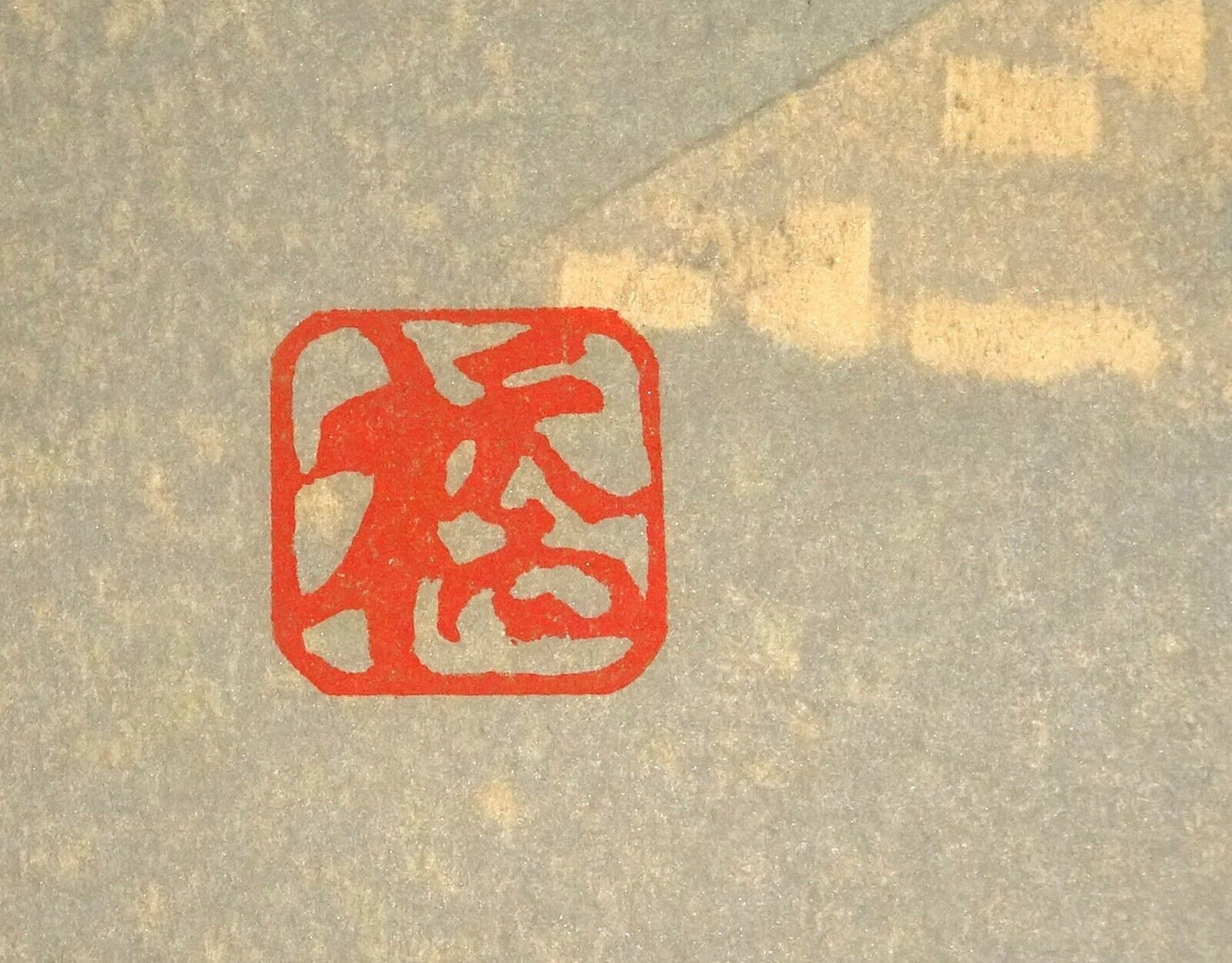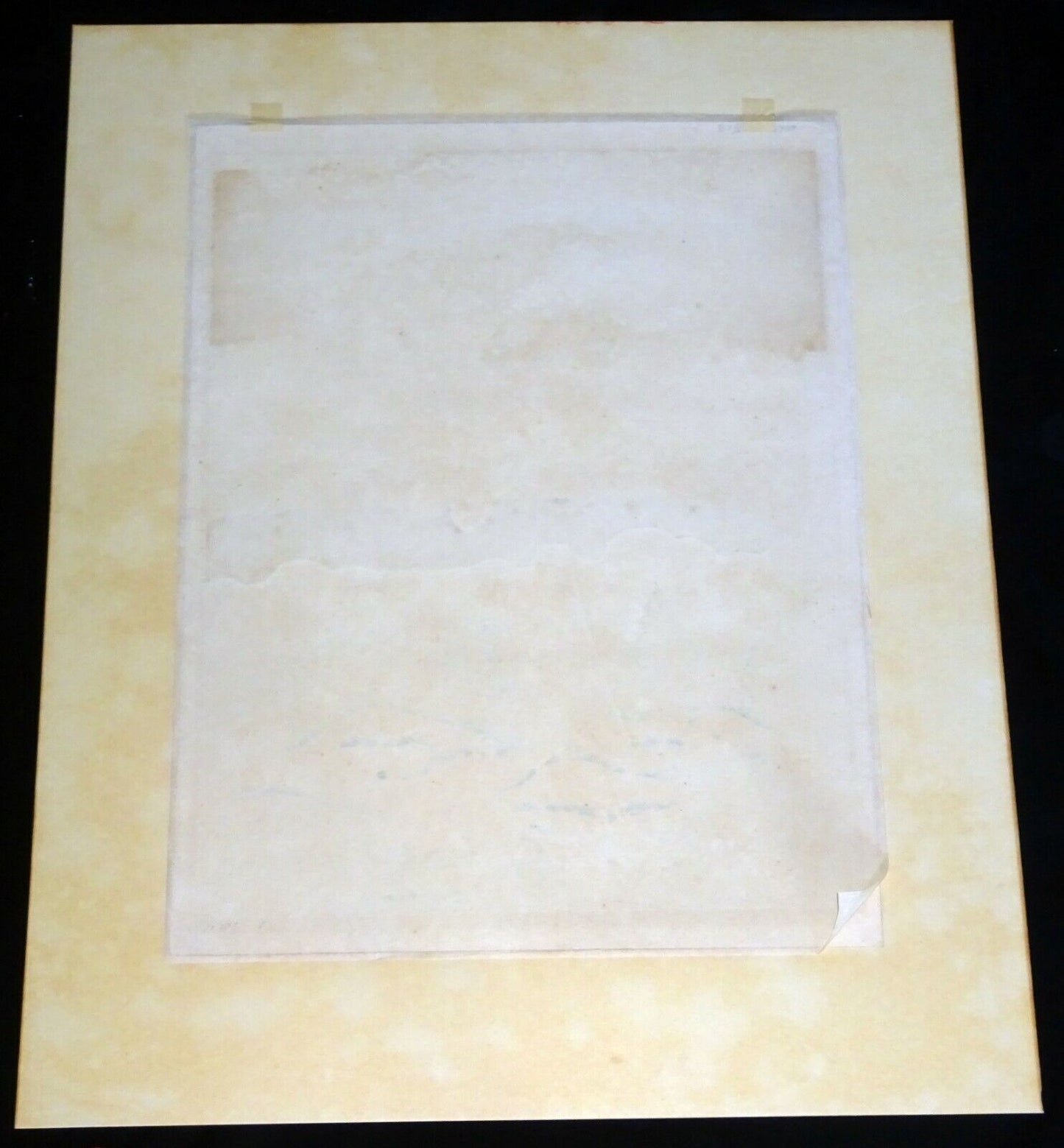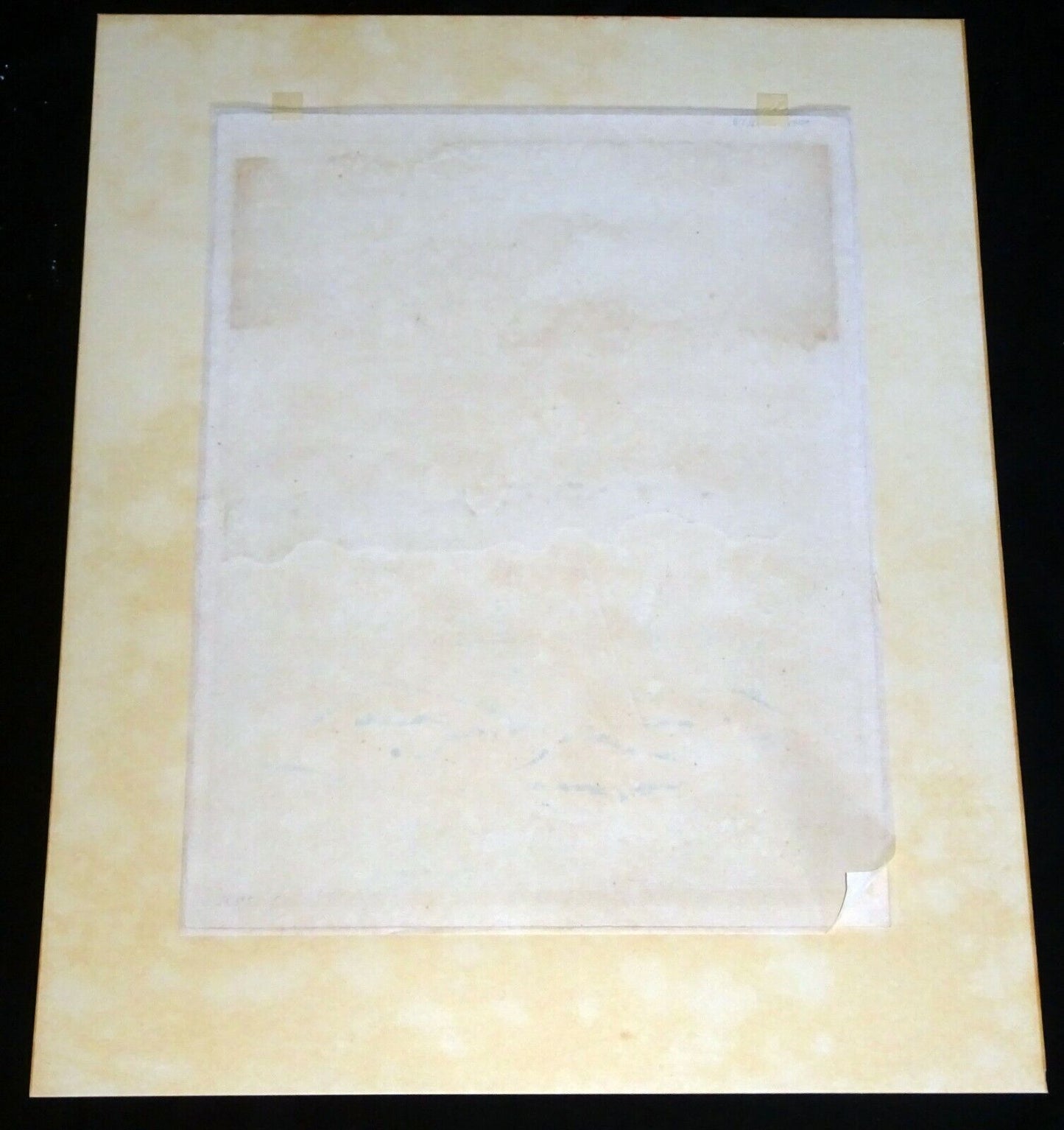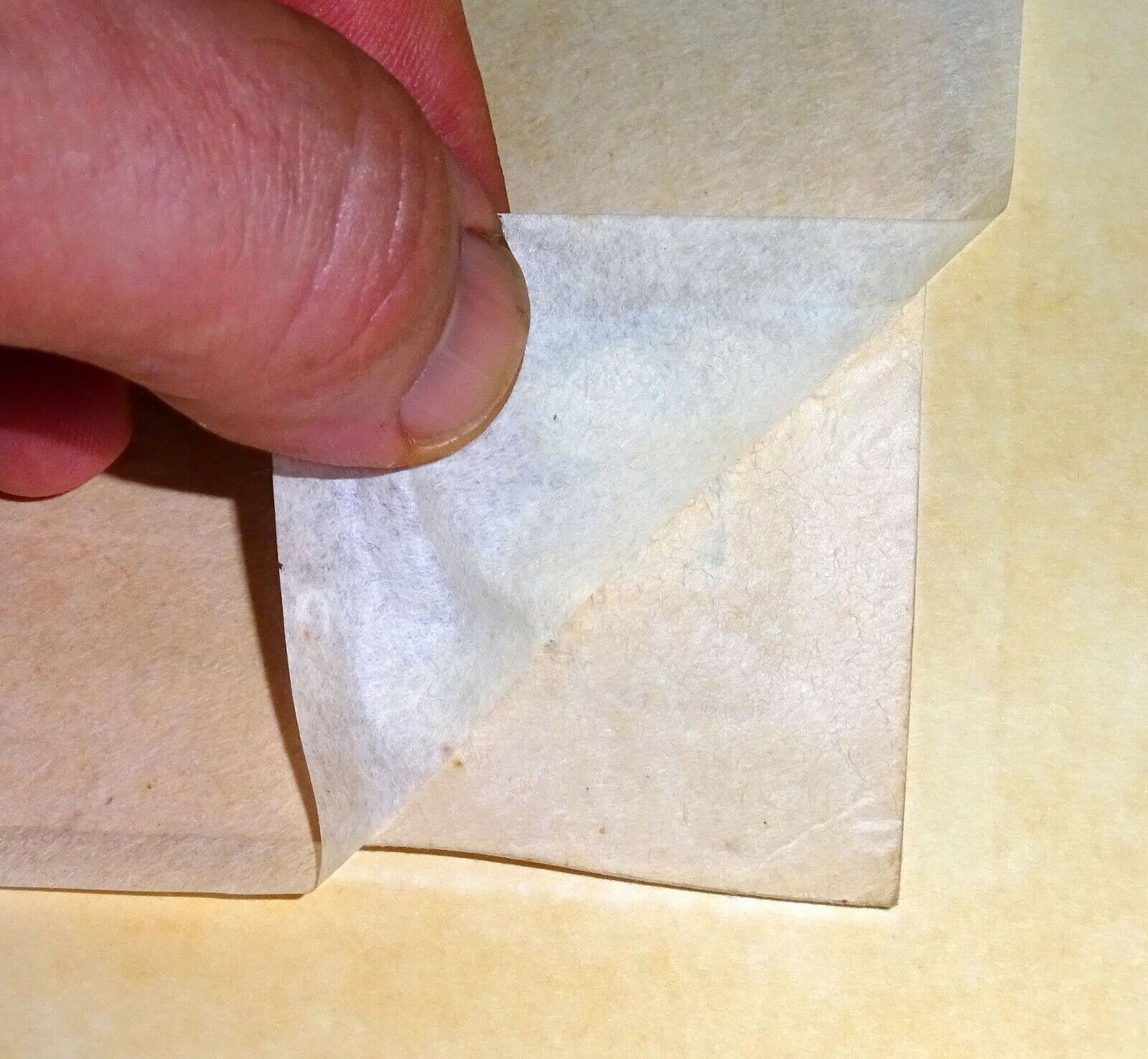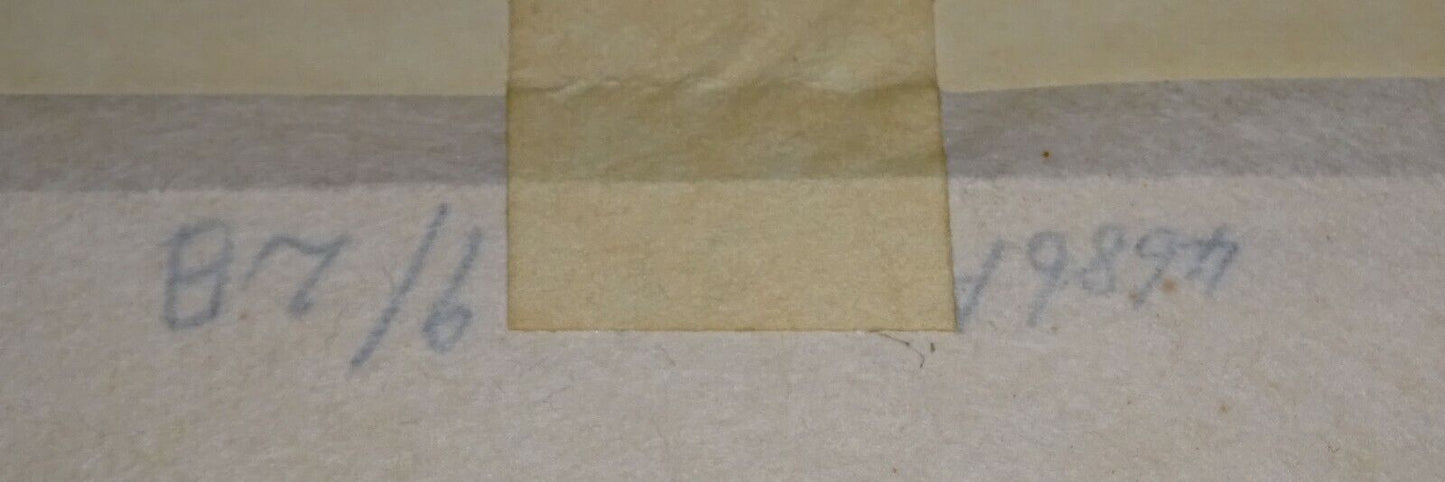Harnisch and Company
1958 Japanese Color Woodblock Print Rice Fields Hashimoto Okiie (1899-1993)(CuM
1958 Japanese Color Woodblock Print Rice Fields Hashimoto Okiie (1899-1993)(CuM
Couldn't load pickup availability
Share
Up for sale from a recent client in Honolulu Hawaii, this 1958 Japanese limited edition 24/60 large color woodblock print that is titled in Japanese characters depicting two figures in a field planting with a red roofed village in the background that was created by the well known artist Hashimoto Okiie (1899-1993). The condition is described above - for more details please check the photos.
Measurements:
Image 21 ⅝ inches x 17 inches
Sheet 23.5 inches x 18 ¼ inches
More about the artist:
Hashimoto was born in 1899 in the Tottori Prefecture, a southern region of the main island of Honshu. Having spent most of his life as the assistant principal of the first girls' high school in Tokyo, it was his life's work as a printmaker that has made him a beloved figure of Japanese art history.
Hashimoto graduated in 1924 after studying to become an art teacher, specializing in watercolours. Around the same time, he attended Hiratsuka Un'ichi's short course in woodblock painting, the practice that would produce his most recognizable work. Hashimoto was welcomed into Un'ichi's circle of artists and friends, the Yoyogi group, an iconic group of woodblock printmakers working in the sōsaku-hanga style, also known as "creative prints".
But it wasn't until Hashimoto encountered Un'ichi that his definitive style began to emerge. Under his tutelage, Hashimoto would produce the quintessentially Japanese woodcut prints for which he is today most well known. Traditionally, Japanese woodcut prints were made via a process of collaboration between carver, printer, artist, and eventual publisher. The sōsaku-hanga movement adopted western ideals about artistic autonomy and creative integrity. Woodcut printmakers like Hashimoto insisted on the artist's involvement in the process from inception of the idea all the way through to making the cut and print.
Western influences are visible in the work itself with Hashimoto making prints that deviated from traditional Japanese woodcuts. While Un'ichi's prints are far more muted, Hashimoto's bold use of color is his signature trait. Even so, the cultural values of traditional Japan are very much alive in Hashimoto's prints, depicting Japanese temples and gardens that are as iconic as they are sublime. Hashimoto also dabbled in figure studies, and even these reflect the tranquility and beauty of Japanese zen traditions.
Prior to the twentieth century and the beginnings of photography, woodblock prints were very much a commercial proposition in Japan. Hashimoto was part of the movement that sought to revitalize Japanese printmaking by embracing global influences that had trickled into Japan during the Meiji period, while maintaining a firm sense of place, and a clear affection for the most splendid parts of his home country.
Condition:
The print was taken out of its frame and although it is shown in the mat in the photos it will be mailed by itself, with mat burn and even toning throughout, the print is backed with rice paper, the rice paper is coming off in the lower two corners and could be professionally removed,
